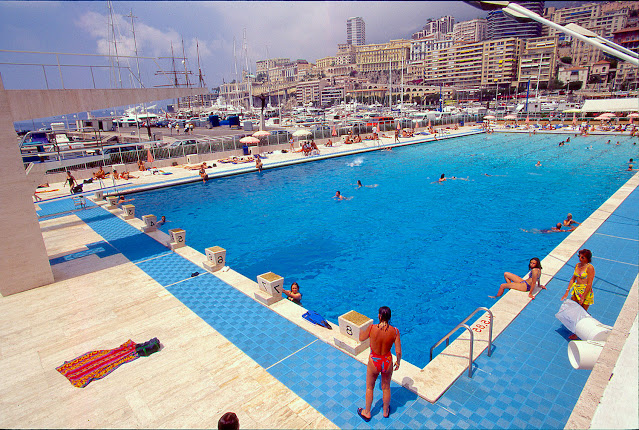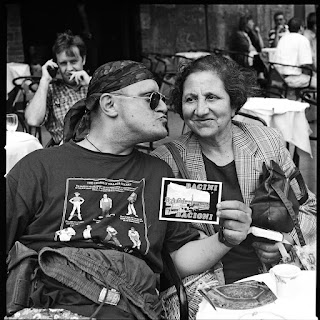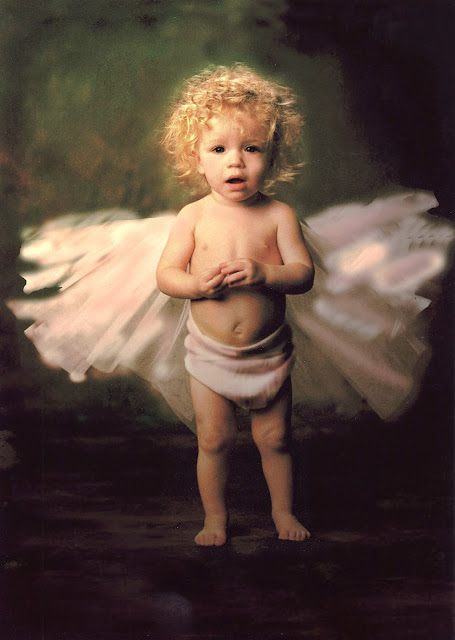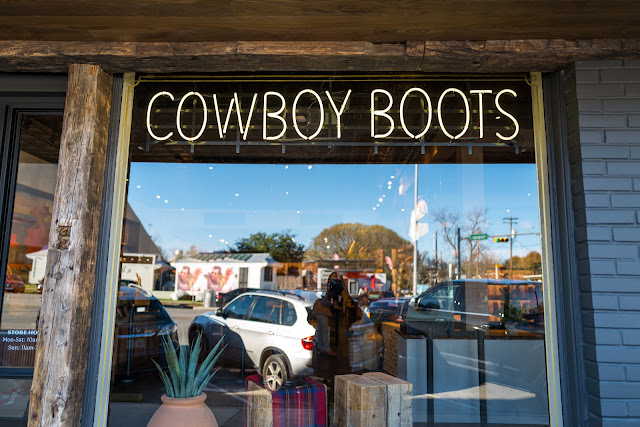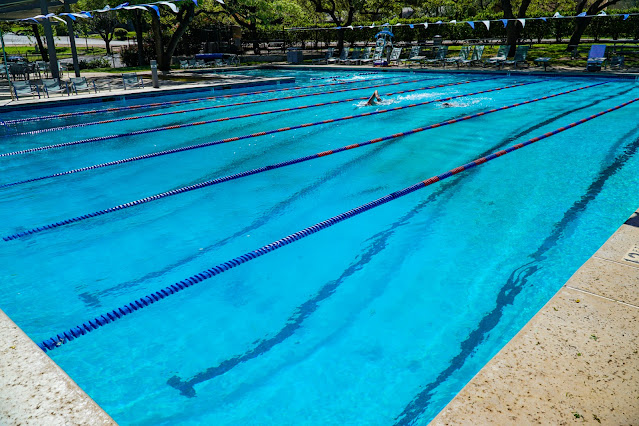I bought a CL camera last year and I use it mostly with third party lenses; some of them completely manual and some AF lenses from Sigma and Panasonic. The camera is small and relatively light. At least compared to the SL cameras with which it shares a lens mount standard. Just before the start of the holidays I bought a 16mm f1.4 Sigma Contemporary lens in the L mount that was aimed specifically for these kinds of APS-C camera bodies. That lens completed my well rationalized (for me) collection of Sigma AF lenses for the CL system. The lens line also included the 30mm f1.4 and the 56mm f1.4. All fast. All very good performers. All relatively inexpensive. The 18-50mm Sigma zoom is the one stop shop for focal lengths and it's quite good as well.
In the days of film cameras the film itself was the "sensor" and the "color science" was separate from the camera itself. You might like the way a film camera worked but you could duplicate the color or look with any similar camera from another brand by choosing to photograph with the same film and by processing the film in the same way.
Leica's marketing in that era was aimed at convincing photographers that Leica lenses were made to much higher standards than lenses from competitors and so the reason to buy Leica cameras was for the ability to use these great lenses. Leica was thought by its adherents and fans to use better and more expensive glass elements and also to have a greater mastery of lens manufacturing and tighter tolerances than the other guys.
While their lenses are still considered by many to be class leading the real reason for me to photograph with Leica cameras now hinges on the opposite marketing proposal. One that says Leica's color science is the most desirable. These observations are related to which family of Leica cameras one uses. I'm partial to the whole L mount concept, even working comfortably with different bodies from each of the three signatories of the L mount alliance. I have used an M8, an M9 and an M10R Leica rangefinder bodies and I found them an odd mix-and-match solution for the digital age but I have had much deeper and more satisfying day-to-day experiences with the Leica SL, SL2, CL, TL2, Sigma fp and various Panasonic S system cameras. My observations about color science are mostly about what Leica's L mount cameras bring to the table. Specifically the CL.
The CL is a modern, digital Leica which shares its file looks, Jpeg output and raw file potentials, in part, with the SL and the SL2 cameras. In the standard setting profiles the cameras all deliver skin tones that are not oversaturated and have have a neutral color balance when the WB is set correctly. They create images with a perceptual sharpness that's different than other makers' cameras. There is what seems to be a higher level of acuity and, at the same time, greater very fine detail and texture. At the neutral settings this does not give the appearance of files that have been over-sharpened but instead the look is of something that's sharp the way we see things in the "real world." At the same time the noise from these Leicas, when used at higher ISOs, is more monotone and plagued by fewer chromatic aberrations and color noise.
I find the raw files from the SL2 and the CL easier to correct and bring to a neutral look than I have found in the past with my Sony and Nikon cameras. Canon cameras seem to be the easiest to use if getting "pleasing" color is the top priority. But with Leica's raw files, across those two cameras, the process of getting pleasant color from each is fairly straightforward. And the image structure is more compelling to me than that delivered by Canons I have used.
Getting the color and contrast of a file right is important. But so it usability of the product across the range of bodies and lenses.
This is a big plus for the L mounts. I like the fact that purchased lenses can be used across a wide range of L mount cameras. I can use, for example, the 24mm f3.5 Sigma i-Series lens as a 35mm AOV equivalent on the CL or use its full frame coverage with a full frame camera and get really good results in each scenario. Likewise I can put a 16mm APS-C lens on an SL2, use the crop mode in the camera and get a nice, perfectly usable 22 megapixel file from that camera. My brilliant 65mm Sigma lens turns into a super-sharp and compelling 90mm equivalent portrait lens on a CL. Switching zooms between the two formats offers the same changes in angle of view.
One might question the use of APS-C lenses on a full frame camera like the SL2 but they can be great tools for videographers who want to get absolutely the best video performance by using the cropped frame for faster focusing and more depth of field. Or higher frame rates. They also provide more depth of field for the same angle of view. And a longer reach with longer lenses. I think of the switch to APS-C sometimes as having a built in tele converter.
The CL really comes into its own as a high quality, high portability system. Coupling the camera with a small selection of prime lenses, or with the Leica 18-55 zoom or the Sigma 18-50mm zoom lens give you a very compact but still powerful imaging system. I sometimes use the system when out hiking in the wilderness or exploring new urban environments during long walks. The system can handle almost anything but the highest resolution (SL2) or the lowest light levels (get a Lumix S5 or SL2-S). When I go out to shoot with intention and have opted to make one of the zooms my choice for the day I also bring along a second CL body and several really fast 3rd party prime lenses. Something like the TTArtisans 23mm f1.4. It's very small and performs well, even at wider apertures. Nice for people who like 35mm on FF. Another favorite is the Sigma 56mm f1.4. That gives me the equivalent of a fast 85mm with none of the bulk or weight.
What most appeals to me is the feel of the camera while I'm using it. It seems to fit my medium sized hands pretty well. That being said it turns into a even better handling camera when I add an accessory grip and an accessory thumb rest. Then the camera is almost an extension of my hand.
I understand that the big money in cameras has moved on from APS-C format. Even Fuji is hedging their bets by bringing out an ever growing mini-medium format system of cameras and lenses to appeal to people who really have fallen head over heels for the 35mm and larger formats. I get that Leica is a relatively small company and needs to concentrate on the areas in which it can show off its greatest strengths. The areas of expensive, very well designed lenses, and premium full frame cameras. The CL never achieved the glow of desirability that Leica seemingly bestows on its bigger cameras.
I'm disappointed to see Leica exit the smaller format (APS-C) market altogether. I like having the choices and since I work with cameras almost every day it's nice to have choices. It's nice to match as close as possible the camera to the intended usage.
Some people who bought into the CL system feel abandoned by Leica and resent that their lenses seem to be orphaned. It's hardly true. Right now a TL mount user (lenses that cover only APS-C but share the L mount) can put any of those lenses on a Leica SL2 or a Sigma fpL, switch the camera to APS-C mode and get nice 22 megapixel and 26 megapixel files that will squeeze every bit of quality from those lenses. Using the same lenses on lower res cameras like the S5 or the Sigma (original) fp camera gets you better low light performance than you'll get with the smaller format cameras. You give up resolution but you gain bigger pixels which give you less noise.
My hope, at this point, is that Panasonic will embrace the retreat of Leica from the APS-C market and see an opportunity to fill that vacuum for an APS-C system of their own built around the L mount. I'd love to see Panasonic come out with a rangefinder style camera, sporting a 24 megapixel sensor; or, even better, a 32 megapixel sensor that takes all of the lenses and let's users have a less expensive entry point into the system. By the same token, but even less likely, I'd love to see an APS-C version of the Sigma fp with an APS-C sensor and the addition of state-of-the-art IBIS.
I'm never 100% correct with my predictions but I think we're going to see a new camera or two from Panasonic, in the Lumix S line, and also a new camera or two from Leica. Sadly, I don't think either of them will be APS-C centric cameras.
I think we'll see a more advanced version of the S5 (probably calle an S6...) with a 40+ megapixel sensor and a vastly improved EVF. We'll probably see the newest Q camera from Leica with a bump up to a 60+ megapixel sensor, and an improved Lumix S1 with the same resolution as the previous model but with a stacked sensor and much more enhanced processing. It seems to be the one Panasonic camera that's pretty much perfectly sorted but just needs the final fine tuning of a second edition. I've so rarely seen that particular model (S1) on sale anywhere. Even now at what I'm guessing is near the end of its run.
I'd love to see a Leica Q camera with a 40 or 45 or 50mm lens on the front instead of the less useful 28mm. But it just doesn't feel like the moment for that one. We'll see how much luck Ricoh has with the GRIIIx and its 40mm equivalent lens. They may be the trendsetter when lens rationality is concerned.
It's time to see some fun variants in the L mount system. The L mount alliance.
Me? I'll mourn the loss of new CLs for a while but I'm always scouting for one more used body. Unless Panasonic comes out with an APS-C dedicated product for the system. A boy can always dream...



